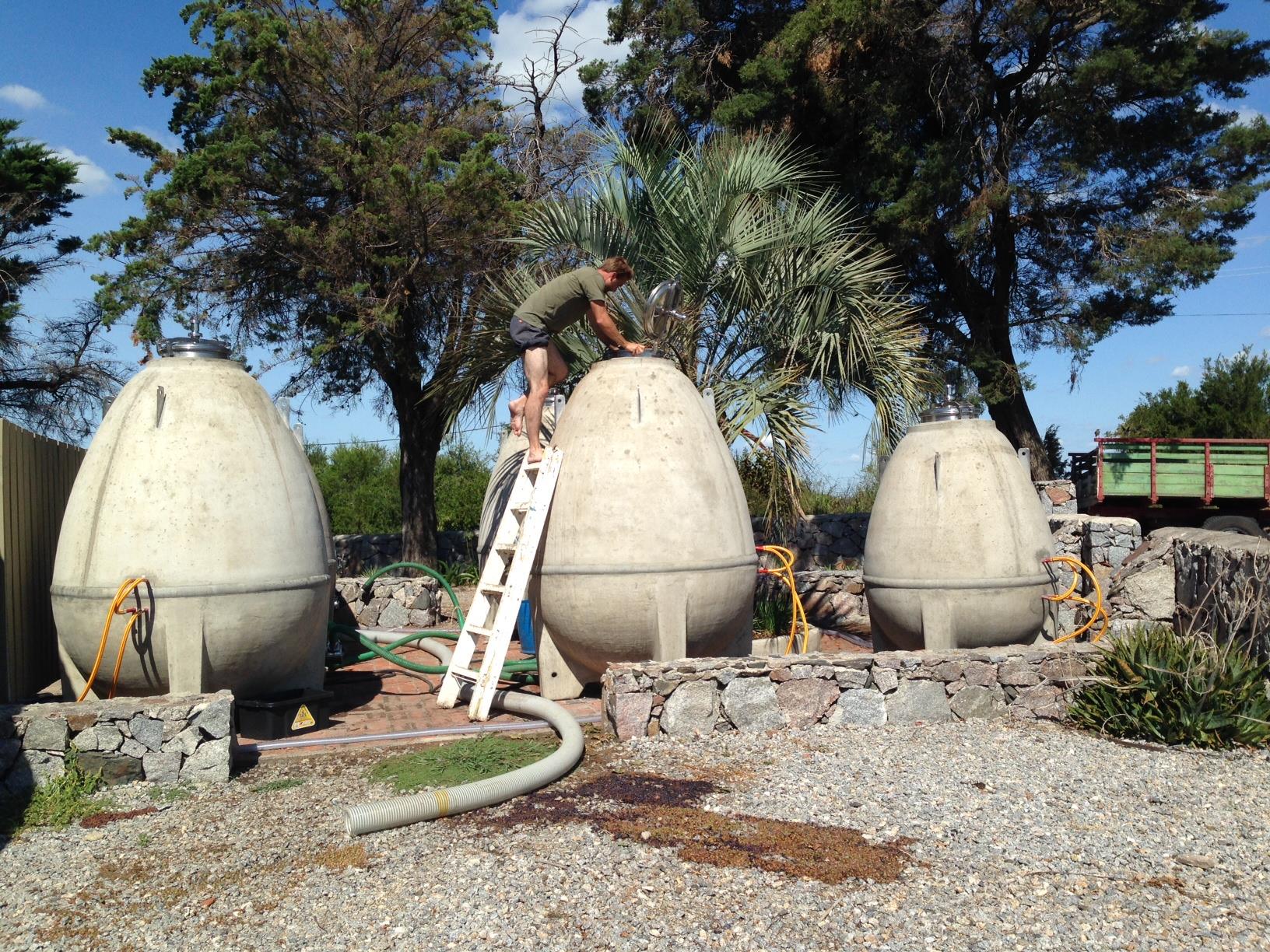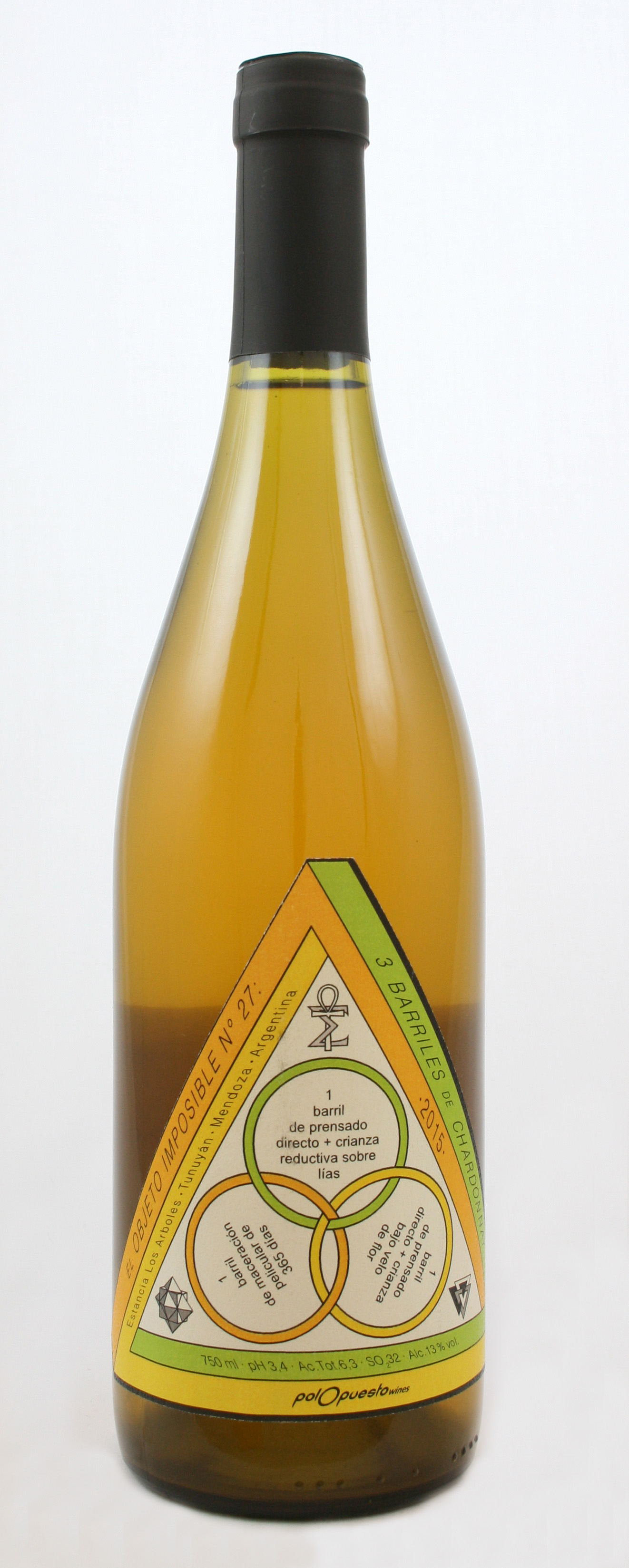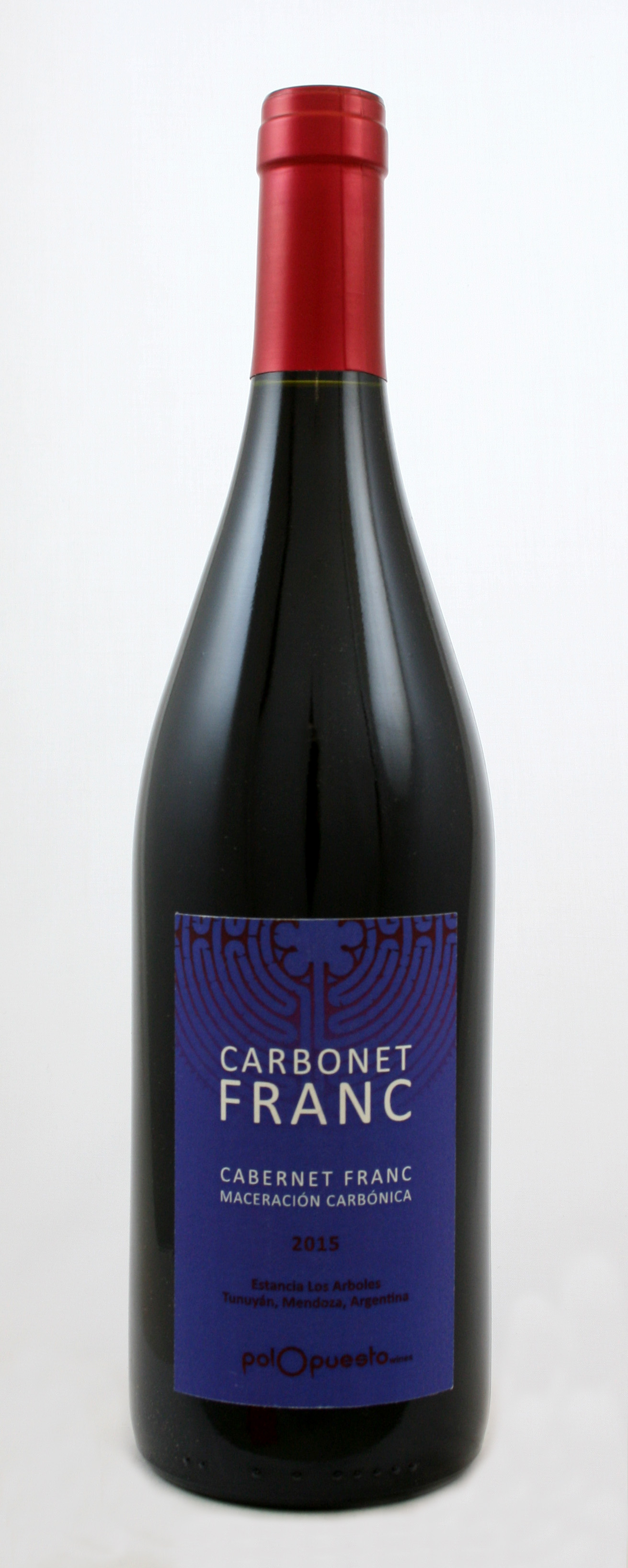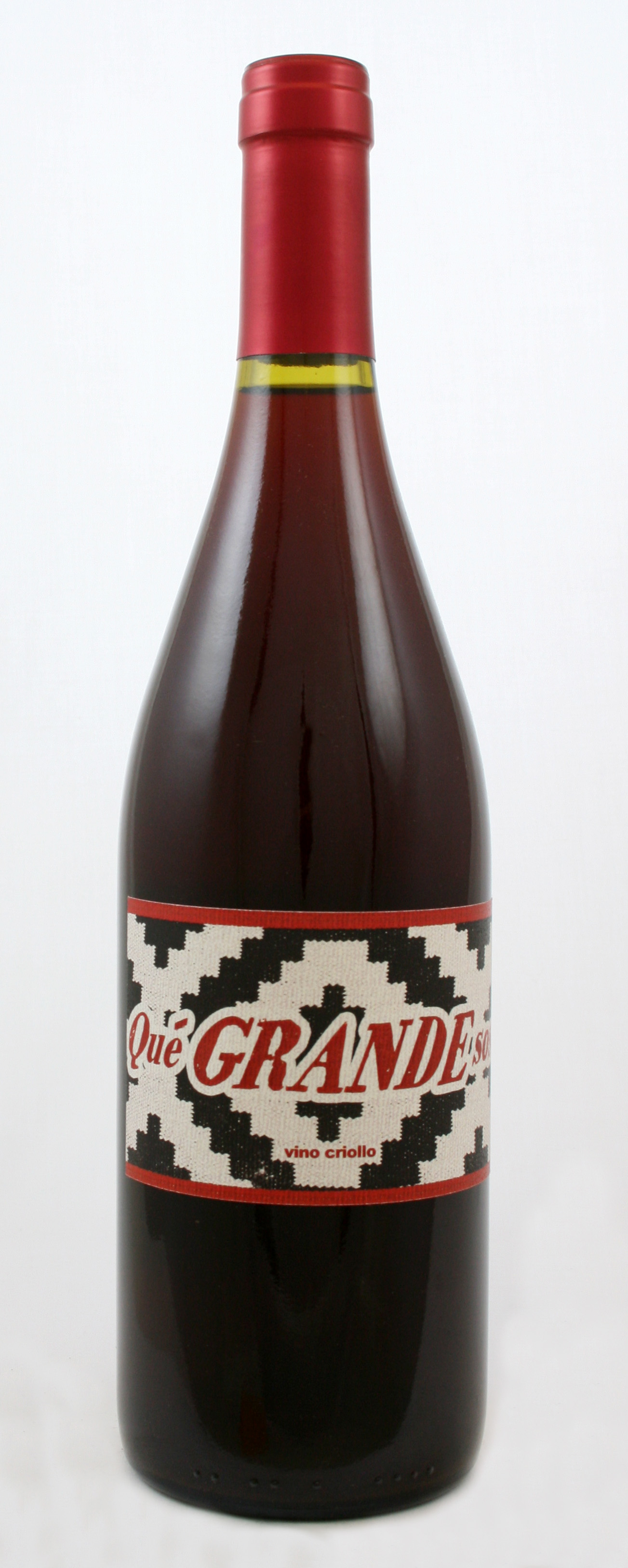The Uco valley is a semi-arid desert region in a rain shadow created by the high mass of the Andes range, which blocks the passage of westerly winds that would bring precipitation from the Pacific Ocean. (The annual average rainfall is around 250mm) The majority of days are warm and sunny but with a drastic drop in temperature at night. It is here that the Estancia Los Árboles vineyard is situated at some 1,600 metres above sea level, with the result that it experiences much cooler temperatures than most vineyards in the region. Planted at the base of the first mountains in the Andean range, a lot of cool air moves down and over this vineyard; and its proximity to the westerly mountains results in less daily sun exposure as the late afternoon sun is hidden behind the peaks.

polOpuesto is the vision of one Pol Andsnes (yes, I know), who is making wines that defy local convention. The story is that every time Pol drove his favourite scenic road up into the mountains, he would pass the vineyard “Estancia Los Árboles” in Tunuyán and think to himself: “If the wine from this place were even half as wonderful as the landscape, it would be damn good wine!” Inspired by the beauty of the location, he purchased all the grapes for his 2015 vintage from this vineyard. Having returned from harvest in Europe where he had tasted a number of skin-macerated white wines and microbiologically-aged wines he decided to use the same Chardonnay grapes to make three different styles of wine and to bottle each separately: one with skin maceration, one with microbiological ageing under a veil of flor, and one “normal” white wine aged reductively on its lees with batonnage. However, every time he tasted the three different wines throughout their ageing process, he always finished by combining the three components together in a glass, feeling that the sum of the three to be greater than the parts. Henceforward, at bottling, he duly blended them together and called the wine El Objeto Imposible Nº 27: 3 Barriles de Chardonnay (aka, El Objeto Imposible). A mouthful. And a mouthful.
Back to the vineyard. The soils are composed of red colluvial volcanic rock (andesite, high in silica and quartz, very common in the Andes range) with traces of calcareous sediments coating the rocks and very little organic material or sand. The ground of this Chardonnay parcel is covered in the local, high-altitude Andean grass called “coirón”, some of which grows up through the grape bunches and inevitably ends up in the harvest boxes and in the fermenting wine. (It can be argued if that is ‘terroir’, but the coirón has its minor effect on the flavour.) Like most vineyards in Uco, this one is planted on the massive eastward slope running down from the mountains, with vine rows running north-south, but unlike most vineyards it has no immediate neighbours which means no invasive farming practice or human presence.

As mentioned the Chardonnay is three wines in one, with three separate vinifications and ageing processes performed with the same grapes and then blended just before bottling. After a manual harvest, one part is whole bunch foot-stomped with skins and stems, whilst the remaining two thirds is direct-pressed. The skin-macerated portion is fermented in a plastic bin, the remainder in old oak barrels. Everything is made with indigenous yeasts and matured in eight-year-old 225-litre barrels for two years with a natural malolactic conversion. No filtration, no fining and no sulphur added until just before bottling. The wine itself is amber-hued with an exotic nose of walnut, fenugreek (from the flor) and matchstick reduction. Texturally, we’re in the realm of dried fruits and spices with a hint of softening oak and good natural acidity to bind it all together. #chardgentina?
Drink with Mollejas al limón (sweetbreads marinated in lemon juice and grilled over charcoal), Chivito (suckling kid goat roasted over an open fire), El postre del vigilante (a dessert of cheese served with fruit preserves), blue cheese served with alcayota jam (a sweet squash native to the Andean region).
A long word about the winemaking: The skin-macerated portion (barrel 1 of 3): Whole bunches stomped by the feet of family friends. Throughout the fermentation in a plastic bin each day a gentle push-down of the cap was done by hand and removal of some of the stems. After the fermentation, the wine and the skins (and what remained of the stems) were placed into two old barrels where they aged and macerated for exactly one year to the day. On the first anniversary of the harvest date (the 21st of February, 2016), the wine and skins were removed from the two barrels, pressed in an old, manual wooden basket press and returned to one of the original two barrels, where it aged for another year before being blended with the other two barrels and bottled.
The microbiologically aged portion (barrel 2 of 3): Whole bunches stomped by foot in the basket press, then pressed slowly to allow the juice to oxidize as it poured into an old barrel. Fermentation in the barrel with indigenous yeast. The barrel was not refilled and a flor formed on the surface with further ageing for two years (without being racked) before being blended with the other two barrels and bottled.
The sur lie aged portion (barrel 3 of 3) saw whole bunches stomped by foot in the basket press, then pressed slowly allowing the juice to oxidize as it poured into an old barrel. Fermentation with indigenous yeast took place and the barrel was frequently refilled and often stirred in order to keep the wine as reductive as possible. Also aged two years (without being racked), before being blended with the other two barrels and bottled.

Compared to the Chardonnay parcel of this same vineyard, the vines for Pol’s Carbonet Cabernet Franc are a couple of hundred metres from the base of the range, with a nearby dry riverbed wherein the river had previously brought down various types of alluvial rock and sediments from the mountains. Here there is less “coirón” grass and more of the indigenous arugula plants, with their piquant leaves and small yellow flowers. (Mention of the local aromatic plants is very important to the terroir, as research conducted in Argentina has shown that the volatile components of the essential oils of aromatic plants located in vineyards are captured by the bloom of grape-skins and thus do affect wine aromas!) Like most vineyards in Uco, this one is planted on the massive eastward slope running down from the mountains with vine rows running north-south.
During fermentation whole bunches of Cabernet Franc were left uncrushed to perform carbonic maceration which occurred in a large sealed plastic water tank for a period of nine days. After pressing in a manual basket press, the wine finished fermentation in old used barrels and was never racked during its 22 months of ageing. The wine is a cracker, carrying plenty of ripe blueberry and blackberry fruit but also some gravitas from lengthy ageing and integrated (used) oak. #loiregentina
And now for something completely different.
With a desire to stray from Malbec and the typical international grapes, Pol searched for more authentic Argentine varieties and eventually came upon a vineyard which, as far as he has found, is the only vineyard in the Uco Valley that has retained any of the unfashionable Criolla varieties. The owner couldn’t say what year the vineyard was planted—because it was older than him—but believed it was somewhere in the 1950s. Certainly, the trunks of the vines were as thick as trees, and with its high-trained traditional pergola canopy it gave the impression of being in a forest. Criolla Grande is the third most produced grape in Argentina, yet it is unappreciated by winemakers, and hardly anyone that makes a varietal wine from it (it usually gets blended anonymously into bulk wines or sent straight to the juice-concentrate factories). And of course, the challenge was to do the opposite, the unusual thing, is often what tickles the fancy of polOpuesto!

Qué GRANDE sos! is a field blend composed mainly of the Criolla Grande variety, with 5-10% of white and pink Muscat, plus a small amount of Criolla Chica (aka, País, Mission), Cereza, and a few plants of Tempranillo and Bonarda. The varieties are interplanted and this wine is a blend of whatever is in the vineyard at unknowable percentages.
The vineyard floor is covered in a layer of the sandy soils typical of Mendoza, with rounded alluvial stones found more than a metre below. The sand reflects sunlight which creates an intense heat during the daytime (which is why the vines are trained in pergolas to create a canopy of shade over the floor). The vineyard has been organically farmed for five years. though not certified. In this pergola-trained vineyard a number of horses graze freely in the shade below the canopy, helping to control the weeds and obviating the need for ploughing. The horizontal leaf canopy and the grapes are positioned at around 2 metres above the ground. Irrigation is carried out with the traditional flood irrigation system in which canals are formed to bring the snowmelt waters through each row of vines.
Whole bunches are foot-stomped and fermented in plastic water tanks outside the winery, underneath a walnut tree. As 2016 was an historically cold harvest season and the wine fermented outdoors, the fermentation was very cool and slow, never going above 20ºC and taking more than a month to complete. The maceration lasted exactly 40 days before being pressed by hand in an old, manual wooden basket press. After an ambient native ferment, the wine was aged for 8 months in old French oak barrels of 225 litres. We’re in glouglou land with this chillable cloudy red jug wine. Red fruits, stemmy-herbal notes alongside the gentle floral waft, a touch of pepper here, a touch of spice there. #arboisgentina?
Interested in finding more about the wines mentioned? Contact us directly:
shop@lescaves.co.uk | sales@lescaves.co.uk | 01483 538820

